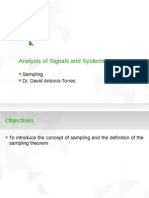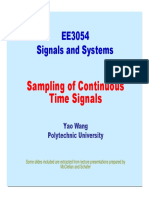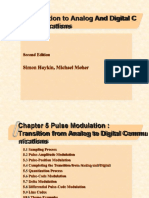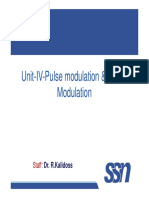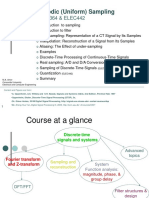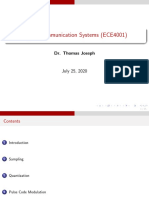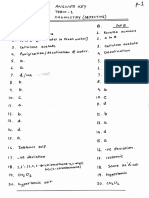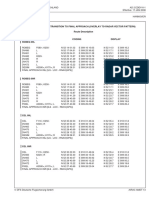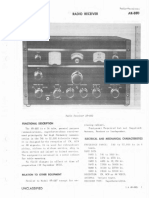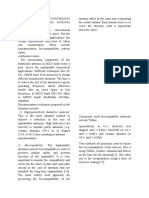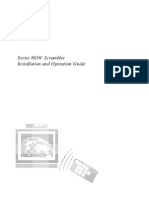0% found this document useful (0 votes)
23 views4 pages7 Sampling
This document discusses sampling in time and frequency domains, including instantaneous sampling, spectral analysis of instantaneous frequency, low pass sampling theorem, sampling using general carrier pulse trains, sampling of sinusoidal signals, and band pass sampling. It provides information on sampling interval, sampling frequency, oversampling, critical sampling, undersampling, and recovery of sampled signals.
Uploaded by
Deepro BardhanCopyright
© © All Rights Reserved
We take content rights seriously. If you suspect this is your content, claim it here.
Available Formats
Download as PDF, TXT or read online on Scribd
0% found this document useful (0 votes)
23 views4 pages7 Sampling
This document discusses sampling in time and frequency domains, including instantaneous sampling, spectral analysis of instantaneous frequency, low pass sampling theorem, sampling using general carrier pulse trains, sampling of sinusoidal signals, and band pass sampling. It provides information on sampling interval, sampling frequency, oversampling, critical sampling, undersampling, and recovery of sampled signals.
Uploaded by
Deepro BardhanCopyright
© © All Rights Reserved
We take content rights seriously. If you suspect this is your content, claim it here.
Available Formats
Download as PDF, TXT or read online on Scribd
/ 4

























